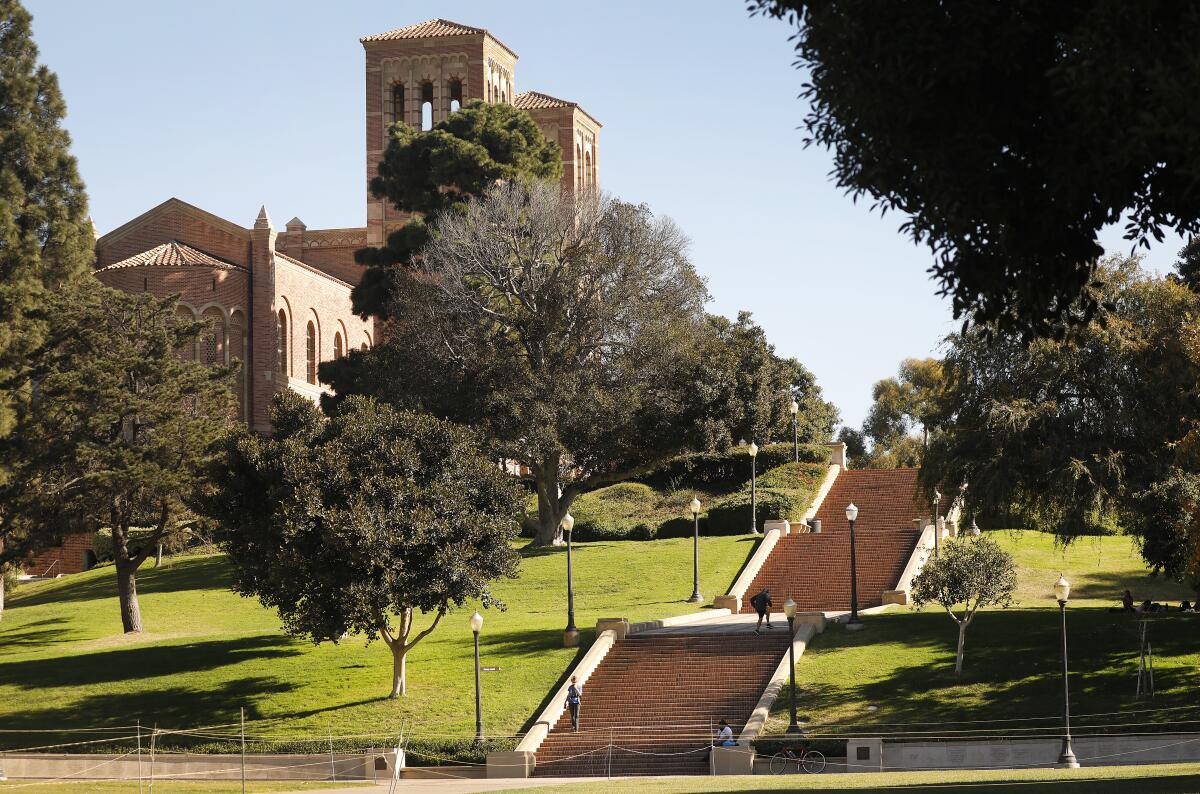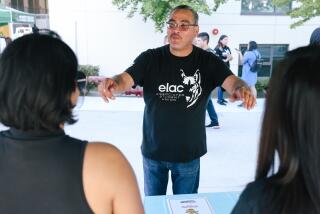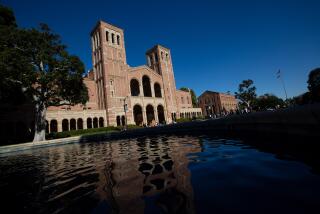UC, USC plan to have students back on campus in the fall for classes

A return to a normal college experience is likely in the fall as both the University of California and USC said Monday that they are planning to bring students back to their campuses for mostly in-person classes amid the rapid development and distribution of COVID-19 vaccines.
“As the University continues to monitor the evolution of the pandemic, we are also carefully planning a safe return to in-person classes,” said UC President Michael V. Drake, who made the decision in consultation with the 10 UC chancellors. “Current forecasts give us hope that in the fall our students can enjoy a more normal on-campus experience.”
USC has not yet made a formal decision on fall plans but is moving forward with plans for in-person classes for the 2021-22 school year. California State University announced last month that it also is planning for its 23 campuses to reopen in the fall.
“We are hopeful we can return to some semblance of normal campus life in the fall,” said USC spokeswoman Lauren Bartlett.
The UC announcement thrilled students, many of whom have struggled with academic difficulties and social isolation since campuses sent most of them home and shifted to nearly all-online learning in March. Aidan Arasasingham, UC Student Assn. president, said the pandemic had deprived him and his friends of not only hands-on learning but also the quintessential college social experience: campus dorm hangouts, meals with friends, group study sessions.
“It’s the light at the end of the tunnel that students have been expecting to see,” said Arasasingham, a UCLA senior. “Online learning has been very difficult.”
Campus leaders also hailed the decision, hoping it will ease the pandemic’s negative fallout on their students and their budgets, which have taken substantial financial hits, including the loss of hundreds of millions of dollars in housing and dining revenues. Enrollment for fall 2021 — particularly out-of-state and international students — also dropped at some campuses as some students balked at another year of virtual instruction.
“For a change, this is putting hope out there,” said UC San Diego Chancellor Pradeep Khosla, saying the decision “is going to be uplifting not just for our students but also our families.”
The decision to plan for mostly in-person fall classes was unanimous among Drake and the 10 chancellors, who discussed the issue at their monthly meeting last week, Khosla said. Even with a vaccine, he said, the campuses will continue to follow all public health guidelines for masking, social distancing and other protocols.
Khosla added that UC leaders will continue to be guided by science and public health guidelines and could change course if needed. But with two vaccines in circulation now and two more expected to win approval in the next few weeks, he was confident that most people would be vaccinated by the fall and that families should be alerted so they can plan.
Dr. Carrie Byington, a UC executive vice president who heads UC Health, said she expects the vaccines to be available to most students, faculty and staff by May or June. About 85% of UC’s 85,000 front-line healthcare employees had been inoculated with the Pfizer-BioNTech and Moderna vaccines as of last week, she said.
UC Health is not yet recommending that the university make the COVID-19 vaccines mandatory, because officials want to wait for more data on their effectiveness and any potential side effects, she said. UC made the influenza shot mandatory beginning in the fall last year, she said, because there was “excellent evidence” over 50 years that the vaccine was safe and effective. But the COVID-19 vaccines are still new.
Byington said campuses performed well in bringing some of their students back to campus housing in the fall and keeping coronavirus cases at far lower levels than many other universities across the nation. Most UC campuses consistently kept their positivity rates below 1%, she said, compared with some universities that struggled with outbreaks that surged to 20% or more of all those tested, such as the University of Notre Dame.
She credited UC’s success to vigorous testing, tracing and safety protocols — along with discipline and responsibility shown by students to follow them. Campuses trained student ambassadors, for instance, to help develop a campus culture of safety and prevention.
Adin Ryssdal, a UCLA sophomore, said he was cautious and a bit skeptical about whether the campus would actually be able to offer in-person classes in the fall. He took off the winter quarter, which began this month, and may also sit out the spring quarter after dissatisfying experiences with online learning. He said his professors did their best to deliver a quality education but Zoom simply could not substitute for being together in the same classroom. One group project for his international development studies class required juggling schedules and time zones because one of the team members had returned home to Brazil.
He added that if he can get a COVID-19 vaccine along with enough of his fellow students, he would jump at the chance to return to campus. “I’m super hopeful,” he said. “I really want that to happen.”
Specific plans for resumption of fall classes, including additional safety measures and starting dates, will be announced by individual UC campuses as they continue to coordinate closely with local public health agencies and follow all local and state health guidelines, a UC statement said.
At UC Santa Cruz, Chancellor Cynthia Larive said she was heartened by the promise of the vaccines and hoped they would allow the campus to begin in-person “experiences” as early as the summer. Resuming outdoor research on Santa Cruz’s organic farm, for instance, or biking, hiking and other recreational experiences could lift students who have been deflated by the online experience.
But she said many questions remain, such as how much in-person contact will be safe, how classrooms should be used, how instruction should be delivered.
“The concern we all have is there’s still a lot of unknowns,” she said. “We have to be nimble and flexible.”
More to Read
Sign up for Essential California
The most important California stories and recommendations in your inbox every morning.
You may occasionally receive promotional content from the Los Angeles Times.











